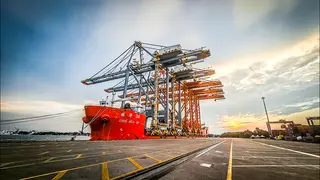As they chug along the 69.2-km long stretch of tracks, hundreds of Hyderabad Metro rakes regenerate power, using the regenerative braking system.
It’s not some green energy pilot project to showcase a use case. Each of the train-on-the-move regenerates power. Part of this regenerated electrical energy is used to power lighting and the ACs of the same train, with the balance, fed back to the overhead traction lines, where it gets consumed by other trains in the system.
The trains have generated a whopping 36 million units in the financial year 2022-23, making up for about 40 per cent of all the traction power that the Metro rails use.
“The power generated by the regenerative braking system went up by 33 per cent over the previous year’s volume of 27 million units,” a Hyderabad Metro executive said.
The Metro network has 57 stations, carrying about 4.4 lakh passengers a day.
Also read: L&T Metro Rail (Hyderabad) board to consider rights issue
“Besides the power that the trains generate, the solar capacities generate about 11 million units, which is about 10 per cent of the total power consumption in 2022-23,” the executive said.
As many as 23 out of the 57 Metro stations received Platinum rating by the Indian Green Building Council (IGBC).
The technology converts kinetic energy converted into electrical energy and is fed back to the power supply system, to apply brakes on the train.
How it works
“To relate the process practically, we can look at this example of the Metro stretch between Nagole to Mettuguda metro stations. There are seven stations along the stretch. A Metro train will halt at all seven stations. So, brakes would be applied seven times. The amount of energy generated is directly proportional to the initial speed of the train,” the executive explained.
Also read: KCR lays foundation for ₹6,250 cr Hyd Airport Metro
Advantages
The regenerated electrical energy reduces the consumption of an equivalent amount of grid electrical energy, which would otherwise have been consumed by the accelerating trains, thereby conserving electrical energy and reducing GHG (Green House Gases) emissions.
“Lowering the electricity demand on the grid will lower the emission of air pollutants and particulate matter in the thermal power generation process. It will also help reduce sulphur and CO₂ emissions and associated environmental degradation,” the executive said.
Apart from regeneration of braking energy, the braking system lowers the maintenance costs of the mechanical brakes and increases the life of mechanical brakes.









Comments
Comments have to be in English, and in full sentences. They cannot be abusive or personal. Please abide by our community guidelines for posting your comments.
We have migrated to a new commenting platform. If you are already a registered user of TheHindu Businessline and logged in, you may continue to engage with our articles. If you do not have an account please register and login to post comments. Users can access their older comments by logging into their accounts on Vuukle.